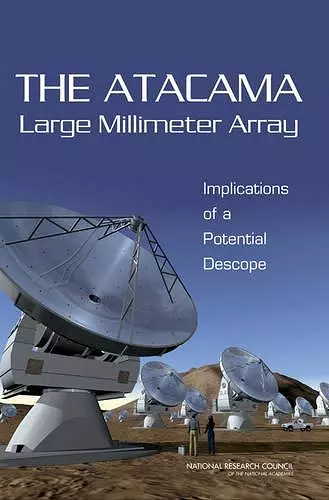The Atacama Large Millimeter Array
Implications of a Potential Descope
National Research Council author Division on Engineering and Physical Sciences author Board on Physics and Astronomy author Space Studies Board author Committee on Astronomy and Astrophysics author Committee to Review the Science Requirements for the Atacama Large Millimeter Array author
Format:Paperback
Publisher:National Academies Press
Published:27th Nov '05
Should be back in stock very soon

The 1991 NRC decadal survey for astronomy and astrophysics included a project called the Millimeter Array (MMA). This instrument would be an array of millimeter-wavelength telescopes intended to capture images of star-forming regions and distant star-burst galaxies. With the addition of contributions form Europe, the MMA evolved into the Atacama Large Millimeter Array (ALMA), a proposed array of 64, 12-meter antennas. The project is now part of the NSF Major Research Equipment and Facilities budget request. Increased costs, however, have forced the NSF to reconsider the number of antennas. To help with that review, NSF asked the NRC to assess the scientific consequences of reducing the number of active antennas from 60 to either 50 or 40. This report presents an assessment of the effect of downsizing on technical performance specifications, performance degradation, and the ability to perform transformational science, and of the minimum number of antennas needed.Table of Contents
- Front Matter
- Summary
- 1 Introduction
- 2 Technical Performance Specifications
- 3 Performance Degradation
- 4 The Threshold for Transformational Science
- 5 Minimum Number of Antennas
- Appendix A: Letter of Request
- Appendix B: ALMA Level-1 Science Requirements
ISBN: 9780309096942
Dimensions: unknown
Weight: unknown
46 pages